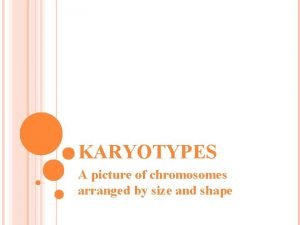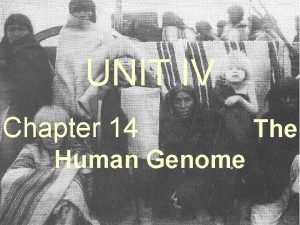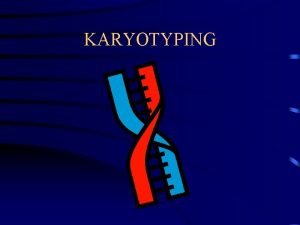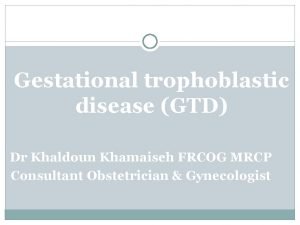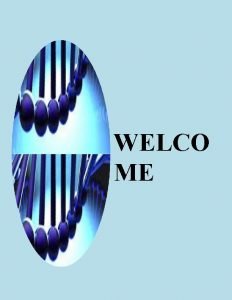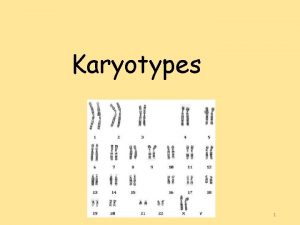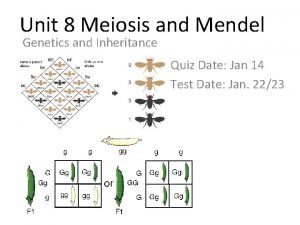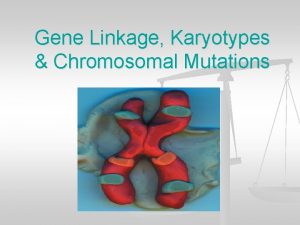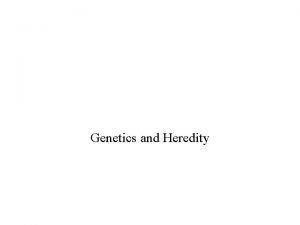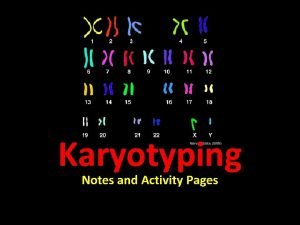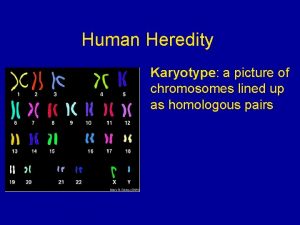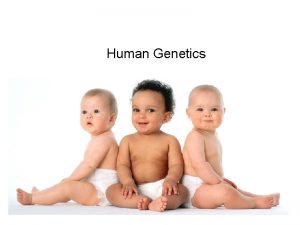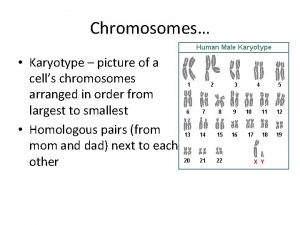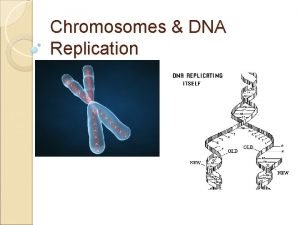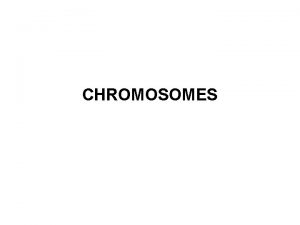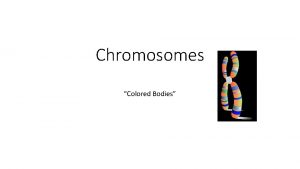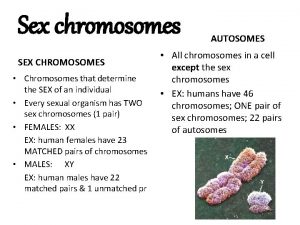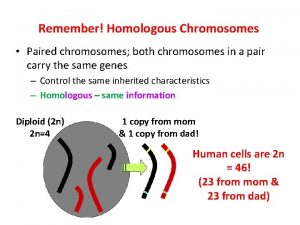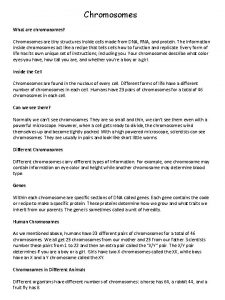Karyotype A photo of the chromosomes in a












- Slides: 12

Karyotype A photo of the chromosomes in a dividing cell that show the chromosomes arranged by size. Purpose of a Karyotype: (1) to detect abnormalities in chromosome number (2) to determine gender

Karyotype →

Trisomy 21 or Down Syndrome

? ? ? Question? ? ? • How does a person end up having an extra chromosome? ?

Nondisjunction It is the failure of paired chromosomes or sister chromatids to separate and go to different cells during meiosis. This could arise from (1) a failure of homologous chromosomes to separate in Meiosis I, (2) or the failure of sister chromatids to separate during Meiosis II. Gaining a single chromosome, in addition to its pair(s) will result in the daughter cell(s) having a defect that is referred to as trisomy. The deletion of a chromosome in a daughter cell is referred to as monosomy.

Nondisjunction in Meiosis I: Anaphase I Homologous Chromosomes do not separate!

Nondisjunction in Meiosis II: Anaphase II Sister chromatids do not separate! https: //www. youtube. com/watch? v=EA 0 qxh. R 2 o. Ok&feature=player_embedded

Nondisjunction • The failure of homologous chromosomes or sister chromatids to separate properly during meiosis. What Should Happen Nondisjunction

The Results IF. . . • the abnormal gametes are fertilized: Trisomy Monosomy

Nondisjunction in Mitosis: Anaphase **Nondisjunction in mitosis does not affect offspring because it does not occur during the production of gamete (sex) cells!

Nondisjunction in Mitosis vs. Meiosis affects only the organism (Less Significant) affects the offspring (More Significant)

Question: • If a mutation occurs during the formation of an egg cell or sperm cell, is that mutation more or less significant than a mutation that occurs in a somatic cell? More significant because it will affect the offspring. • If a mutation occurs during the formation of a somatic cell, is that mutation more or less significant than a mutation that occurs in a gamete cell? Less significant because it only affects that individual.
